Global : Why aren’t global clothing brands responding to #MeToo?
Source: Eco Business
Global : Why aren’t global clothing brands responding to #MeToo? Read More »
Over 100 speakers will take to the stage and thousands of visitors are expected to listen to the talks. The event will take place from 19 – 21 May, at ExCeL London, and speaker applications are open until 31 January.
The post Safety & Health Expo is looking for speakers. Are you interested in joining the line-up? appeared first on SHP – Health and Safety News, Legislation, PPE, CPD and Resources.
Safety & Health Expo is looking for speakers. Are you interested in joining the line-up? Read More »

It’s hard to be a Hiking Dude if you can’t navigate your way through the wilds. So, I spent my Saturday morning with a great group of Women Who Hike helping them hone their map and compass skills. The morning started a little drizzly but turned into a beautiful fall day to spend out in nature.
We met at a local nature center and spent almost two hours learning what a compass does (and does not do), how to take a bearing, orient a map, read topographic features, find direction without a compass, and following directions for specific distances. I thought it was a pretty packed morning and I really enjoyed meeting some new friends that I hope to see out on the trails.
Much of the information we covered comes from Compass Dude and there is a lot more detailed compass knowledge there, including some activities to try.

Once everyone was comfortable using their compasses, we played a compass game for about 15 minutes. They all said it was helpful in driving home the skills of following a bearing and estimating distance. You can print the Compass Game if interested. The winning pair of women each received a ‘compass’ merit badge.
It was nice that the sun came out to help with telling direction without a compass. We showed the Shadow Stick method, Moon method, and Wristwatch method because GPS devices can run out of electricity and compasses can break on rocks. Being able to estimate directions with no tools might be important some day.
If you’re a woman looking to start hiking, or looking for some friends to hike with, check out the Women Who Hike website or Facebook page. They have chapters in every state and tend to be a very supportive, helpful group.
Hike On!
Video shows How to TIG Braze a knife handle on a file to make a Trench Knife
How to TIG Braze a Knife Handle Read More »
There is still considerable disagreement about the utility of the Tactical Reload. However, whether it has utility or not, it doesn’t have to be a clumsy technique. This is how the Tactical Reload is taught at the elite Rogers Shooting School and Dodd & Associates.
The magazines are handled by the thumb, forefinger, and middle finger. For visual clarity in this photo essay, the partially depleted magazine is depicted by an empty stainless magazine and the full replacement magazine by a blue magazine with a dummy round on top.




This method uses the hand’s two most dexterous digits, the thumb and forefinger, to catch the partially depleted magazine. Using the hand’s most dexterous digits makes it simple to handle even double column magazines.
Tactical Reloading Read More »
Luxembourg is kind of a hikers’ paradise with wonderful trail – but unfortunately these are all in the North of this small country. My route was leading me through the heavily industrialized South. Up to only decades ago mining was predominant in this area which was documented by a memorial for all the miners that had lost their lives in work accidents. It was interesting to see that the number of accidents significantly decreased over the years! Right nex to this impressive memorial is a much smaller one, a little chapel with the Madonna of Leiffrächen – a very popular pilgrimage site not only for miners.
 I was very lucky to have an invitation in Kayl
I was very lucky to have an invitation in Kayl
where one of my FB friends had invited me to her house. I was not only heavenly fed but could eventually ask all my questions about multilingual Luxembourg: The little country has its own language which is kind of similar to German so that I could halfway understand what is going on. When I tried some newlearnt words on my hosts’ dog it even obeyed! And most people here also speak German as a second language plus French as the third official language! Very impressive also the incredible apricot cake I was served for dessert. I liked it so much that I was given the leftovers when I departed next morning!
The rest of my route through Luxembourg was unremarkable. Nothing to write home about, but it was still amazing that the trail planners found some relatively unspoilt areas where to route the trail through. Sometimes the scenery was really pretty but I could always here a motorway or trainline. Scenic highlight was my arrival at the three country border at Schengen / Perl where I hiked through the vineyards of the river Mosel and couldn not resist to nick some grapes.
Europe Diagonal: Luxembourg Read More »
Almost everyone loves to travel as it introduces us to new experiences and create long-lasting memories. An increasingly popular trend in traveling is backpacking: traveling with simply a bag and its contents. Backpacking is usually dependent on public transportation, hitchhiking, and shelter is usually found at more public locations rather than homes for rent. Backpacking trips usually enrich you with the local culture, rather than simply visiting tourist attractions. For example, a backpacking trip to South America would have you interacting with local residents on a daily basis In addition, backpacking trips are usually much more extensive than normal vacations, meaning you’ll be away for a long time. So how exactly can someone get into backpacking and have a successful first trip? Here are five tips that should help you with your first backpacking trip.
Packing accordingly is important for any trip, but it is especially important for backpacking trips. Backpacking trips are much longer than traditional vacations, making packing extremely important. In addition, you will likely only be traveling with your backpack, meaning that there is even more importance placed on how you pack and what you pack. Make sure you have everything you need to get by on your trip, including food, clothing, water, and money. You obviously don’t have to go overboard as that would ruin the purpose of a backpacking trip, but you should still pack well enough to ensure that your first backpacking trip is a happy and healthy one.
Backpacking by yourself is quite the experience, but it can be dangerous if you don’t know what you’re doing. That’s why it is recommended that new and inexperienced backpackers bring a friend along for their first trip. Having someone with you while you’re backpacking allows you to have someone able to help you if something goes wrong, making the trip much safer. There are plenty of things that can go wrong while you’re traveling the world with minimal possessions, making backpacking a scary prospect. Due to this, you should probably backpack with a friend in order to learn the ropes before you immediately jump into a solo backpacking trip.
Being in peak physical shape is highly recommended for your first backpacking trip. While you’re backpacking you’ll be doing a lot of physical activity including walking, hiking, and lifting. If you’re not in peak physical condition, it could be quite difficult to complete your first backpacking trip. Being out of shape could cause you to stop early or be unable to complete your journey, as the physical toll of all that walking and hiking can be too much for some people. So if you plan on taking your first backpacking trip soon, ensure that you train your body and are in great shape.
Another important aspect of backpacking for the first time is buying the right gear to use. Obviously, you will need the right backpack, as you will need one that is large enough to fit all of your belongings inside of it. You will also need other gear such as hiking clothes like boots and comfortable walking shoes. You also may need things like flasks and containers in order to keep your food hot or cold depending on the situation. You also will likely need gear for shelter including a tent and a sleeping bag, allowing you to sleep no matter where your backpacking travels take you. Bringing the right gear on your first backpacking trip can make the trip much easier and safer for you.
One of the most important tips for first-time backpackers is to keep an open mind on the trip. Backpacking trips can involve lots of unexpected events. You never quite know what you’re going to see or who you’re going to meet. Due to this, it is important to keep an open mind while on your trip. You shouldn’t plan out your days too much or become too focused on getting specific things done. You should simply relax on your backpacking trip and go with the flow. Let things happen naturally around you and let the experiences naturally come to you. This will make your backpacking trip much more authentic and much more enjoyable.
5 Tips For Your First Backpacking Trip Read More »
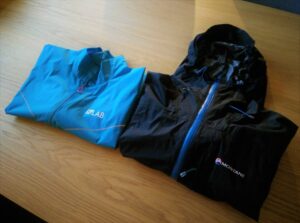
Windbreaker VS Rain Jacket – What is a better option? Left: Salomon S/LAB Windbreaker; Right: Montane Minimus Rain Jacket
Windbreakers have become increasingly popular in the last years and many hikers have switched from rain jackets to these minimalistic shell layers. Windbreakers are lighter and pack smaller than rain jackets and are thus perfect for lightweight hiking. Nevertheless, it’s important to know that a windbreaker performs quite differently than a rain jacket. A rain jacket is, as the name suggests, primarily intended for protection against the rain, but it also provides good protection against the wind. Windbreakers, on the other hand, provide very little protection against the rain, but efficiently block the wind. I have a windbreaker (Salomon S/LAB) as well as a rain jacket (Montane Minimus), and I always decide which one to wear/carry in my backpack after checking the weather forecast and conditions on the trail in question. In the following I will explain the differences between windbreaker jackets and rain jackets to help you choose the right garment for your needs.
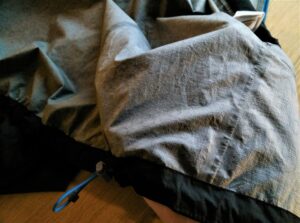
Windbreaker VS Rain Jacket – Rain jackets are made of multiple layers and have a membrane/coating which significantly reduces the air permeability
Air permeability (better known as breathability) is important when it comes to hiking, backpacking and sports apparel in general because you will sweat extensively throughout the activity if your clothes are not air permeable. Rain jackets are typically made of multiple thin material layers and have a membrane or a coating to prevent rain drops from penetrating the garment. This material structure significantly reduces the air permeability and therefore rain jackets are known to be the least breathable activewear, although breathability can vary hugely between high-quality rain jackets and cheap ones. You can read more about this in our article Rainwear: Hydrostatic Head and Breathability. Windbreakers typically provide better air permeability because they are made of a single layer of tightly woven synthetic fabric which blocks the wind – but not the rain (at least not for long). As such, windbreakers are perfect for highly aerobic activities like running, fast alpine ascents etc. Air permeability can also vary hugely between high- and low-quality windbreakers.

Windbreaker VS Rain Jacket – Windbreakers pack smaller and weigh less! Left: Salomon S/LAB Windbreaker; Right: Montane Minimus Rain Jacket
Windbreakers almost always pack smaller and weigh less then rain jackets. Therefore, they are very popular among lightweight hikers. Everybody should indeed use lightweight gear for hiking because lightweight gear reduces discomfort and strain on the body. You can read more about this in my article Why hike lightweight. So, how big is the difference in weight? A windbreaker for men can weigh as little as 80 grams (3 oz.) while it’s hard to find a rain jacket that weighs less than 200 grams (7 oz.). As for the packability, windbreakers obviously pack smaller than rain jackets. My Salomon S/LAB jacket for example packs so small that I avoid putting it in the main compartment of my backpack because I have trouble finding it if I need it later. In terms of packed size, a high-quality rain jacket typically has the size of a big apple while a top-tier windbreaker has the size of a small mandarin. The difference is not that big, but if you are, for example, going climbing and you want your shell layer attached to the climbing harness, a windbreaker will be less bulky.

Windbreaker VS Rain Jacket – Windbreakers are more comfortable to wear because they provide better stretch and freedom of movement
Rain jackets belong in the category of hardshells, which – as the name suggests – are somewhat stiff garments. Therefore, they are not the most comfortable apparel to wear. Nevertheless, there are exceptions such as rain jackets made of Polartec NeoShell fabric which are known to be very stretchy. However, these jackets are also very expensive. Windbreaker jackets on the other hand provide much better stretch than most rain jackets and thus greater freedom of movement. They are also less bulky and less noisy (stiff waterproof fabrics tend to rustle when you move). All in all, windbreakers are a better choice in terms of comfort. However, they provide nowhere near as good protection against precipitation as rain jackets.

Windbreaker VS Rain Jacket – Without a doubt rain jackets provide better protection against the rain
The primary function of any rain jacket is to keep you dry in (heavy) rain. Nevertheless, as rain jackets are made of relatively impermeable materials, they also block wind quite efficiently. Therefore, a rain jacket is a great option when you can’t rely on weather forecast (for example for long backpacking trips) and you need a versatile protection against all the elements. Windbreakers do provide some protection against the rain, but they will for sure not keep you dry for long. Unlike rain jackets, they don’t utilize membranes/coatings for weather protection, but merely a tightly woven fabric treated with DWR. However, windbreakers provide excellent protection against the wind. As such, they are perfect for short adventures (day hikes, trail running etc.) in dry but windy weather.

Windbreaker VS Rain Jacket – Windbreakers are made of thinner materials than rain jackets and thus tear faster
Windbreakers are more delicate than rain jackets because they are typically made of thinner fabrics. Nevertheless, many top-tier rain jackets are also quite fragile; the material simply can’t be robust and lightweight at the same time, and thus more or less all high-quality rain jackets are lightweight rather than heavy and robust. Therefore you should be careful not to get whichever garment you choose to wear caught on rocks, thorns, branches etc. because it will tear. Windbreakers are, however, easier to repair because the fabric can be sewn by hand or machine without affecting performance. Mended tears might block wind less efficiently, but the garment should still preserve its functionality. It’s harder to sew a rain jacket and preserve its performance because you will obviously make holes into the membrane or coating, through which precipitation can enter and spread.
When it comes to price, rain jackets are in general more expensive – at least if we are comparing products of the same quality. Nevertheless, high-quality and super lightweight windbreakers can also be very expensive. Some windbreakers from brands such as Salomon and Black Diamond cost more than $150 which is indeed a lot for such a minimalistic garment.
So, should you buy a windbreaker or a rain jacket? If you mostly hike in dry weather, a windbreaker is the obvious choice because it provides good breathability and is lighter and more packable than a rain jacket. You can also use it for running and other highly aerobic activities which is indeed a benefit. Now, if you often hike in rainy weather, in areas with unstable weather (for example at high altitudes) or do long backpacking trips where you can’t rely on the weather forecast, a rain jacket is a better option. For such conditions a windbreaker doesn’t provide appropriate protection against the elements.
I typically use my Salomon S/LAB windbreaker jacket for day hikes and fast alpine ascents in the Alps in dry weather. For all other trips I use my Montane Minimus rain jacket because it’s more versatile – it provides protection against the wind as well as protection against the rain.
I’d love to hear about your thoughts on windbreakers and rain jackets. Write them in the comments section below.
The post Windbreaker VS Rain Jacket – What is a better option? appeared first on Best Hiking.
Windbreaker VS Rain Jacket – What is a better option? Read More »
Over 100 speakers will take to the stage and thousands of visitors are expected to listen to the talks. The event will take place from 19 – 21 May, at ExCeL London, and speaker applications are open until 31 January.
The post Safety & Health Expo is looking for speakers. Are you interested in joining the line-up? appeared first on SHP – Health and Safety News, Legislation, PPE, CPD and Resources.
Safety & Health Expo is looking for speakers. Are you interested in joining the line-up? Read More »
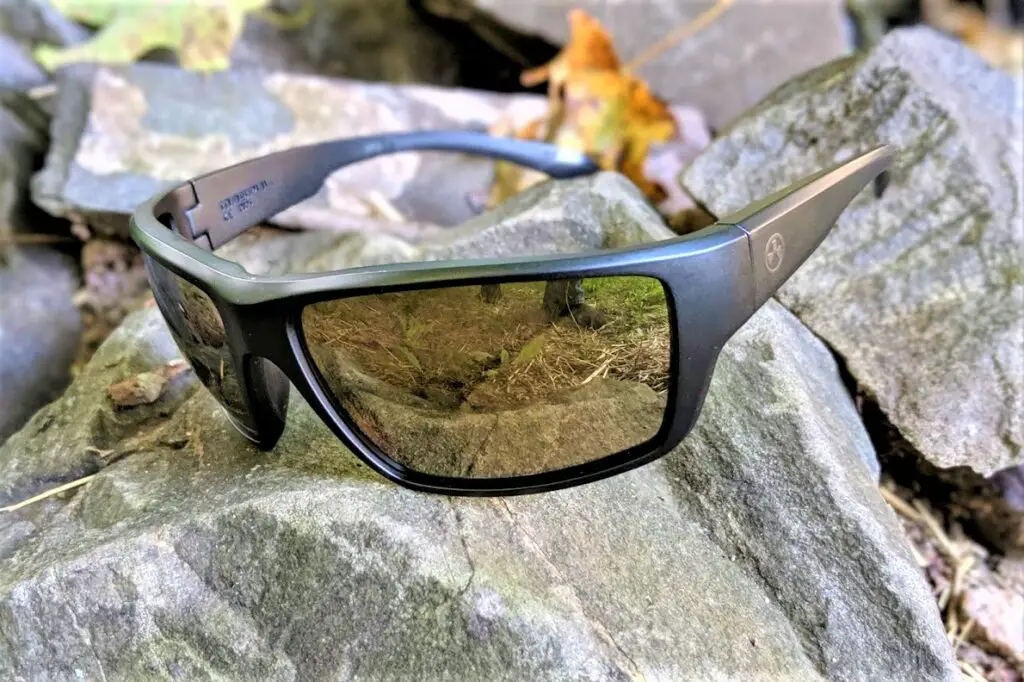 While you weren’t looking (or perhaps while your eyes were recovering from debris damage), sunglasses have quietly evolved from simple “shades” to keep the sun’s glare from your eyes into a full-on vision-enhancing system that offers protection of the ballistic and UV sorts. Lots of companies have popped up offering superior sunglasses, but recently, a small, rowdy, upstart company you’ve probably never heard of – Magpul – introduced the production of sunglasses made with their interpretation of what sunglasses should be. Not only did they hit the mark, but they slid into the crowded arena, bowled over the competition, then promptly dropped the mic. BOOM.
While you weren’t looking (or perhaps while your eyes were recovering from debris damage), sunglasses have quietly evolved from simple “shades” to keep the sun’s glare from your eyes into a full-on vision-enhancing system that offers protection of the ballistic and UV sorts. Lots of companies have popped up offering superior sunglasses, but recently, a small, rowdy, upstart company you’ve probably never heard of – Magpul – introduced the production of sunglasses made with their interpretation of what sunglasses should be. Not only did they hit the mark, but they slid into the crowded arena, bowled over the competition, then promptly dropped the mic. BOOM.
By Drew, contributing author to Survival Cache and SHTFblog
I recently introduced a pair of Magpul Terrain Polarized sunglasses to my face. This is my story.
For years, Wiley X sunglasses have nose-perched on my face whenever any eye-shading duties have presented themselves – shooting included. However, when I noticed that the mighty Magpul design team had furrowed their collective brows and dedicated themselves to producing sunglasses, I simply had to try them. Magpul – in my experience so far – just doesn’t do anything they put their minds to in a half-assed manner.
Navigating my way to the Magpul website to peruse their eyewear selections, the Terrain series of sunglasses struck my fancy; it seems Magpul designed this series of shaded specs to not only enhance the user’s day-to-day mundane life, but also to provide unparallelled field of view and comfort while wearing hats and hearing protection. Also drawing my attention was the fact that the Terrain was designed for larger faces, which would likely play nicely with my planet-on-a-stick head size.
The frames of the Magul Terrain sunglasses are made of TR90 NZZ, a lightweight polyamide material that has been specifically engineered to provide not only shatter resistance when bent or deflected, but also boasting superior impact strength – important for those of us who prefer our eyewear to be able to resist coming apart at the range if we’re unfortunate enough to catch a wayward bullet splatter or ricochet impact.
In point of fact, the frames are so lightweight and flexible that the most common first impression I got when showing the Terrains was, “these are from Magpul? They feel flimsy!” However, a few minutes of twisting and turning the sunglasses frames resulted in 100% first impression turnarounds – these sunglasses can’t be turned into pretzels or seriously damaged without ridiculous effort.
The lenses of the Magpul Terrain sunglasses are available in either polarized or non-polarized configurations. However, either option comes standard with anti-reflective (AR) treatments on the inside of the lenses to minimize distracting mirror-like reflections on the interior surface of the glasses. The lenses also boast oleophobic coatings that keep liquids – rain, chemicals, gasoline, blood, et al – from building up on the lenses, and promote runoff and/or beading up of these liquids, maintaining clear, usable vision for longer periods of time.
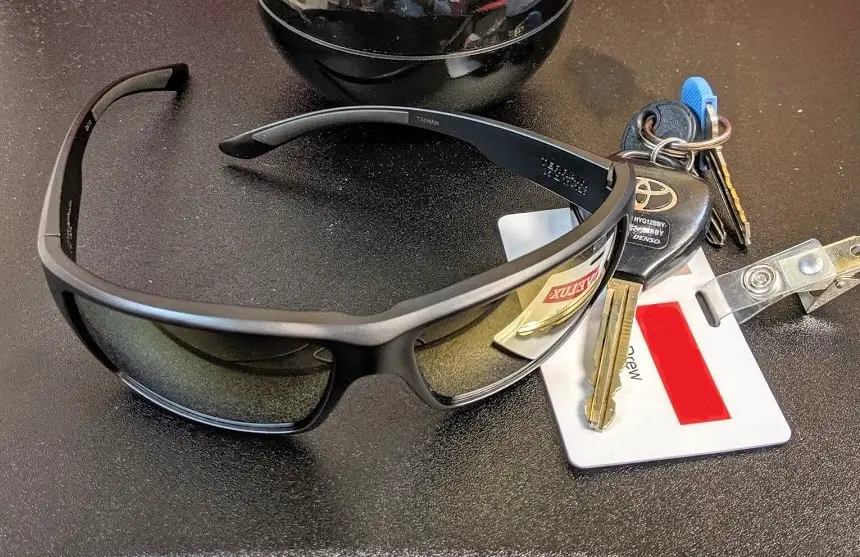 The entire Terrain glasses envelope meets not only the US civilian ANSI Z87+ high-impact standard test rating for safety, but also the military NATO standard MIL-PRF 32432 for ballistic protection of eyewear. These military standards mean that not only do the glasses pass tests for optical clarity, environmental stability (won’t expand/contract/quit working with temperature or moisture extremes), and UV ray protection, but the glasses also meet the protection requirements against a 0.15 caliber projectile travelling at 640-660 feet per second. As a frame of reference here – if Ralphie in A Christmas Story had been wearing Magpul Terrain sunglasses while fighting off Bad Bart’s wayward gang, he wouldn’t have been reduced to a whiny casualty when his trusty Red Ryder 200-shot carbine ricocheted.
The entire Terrain glasses envelope meets not only the US civilian ANSI Z87+ high-impact standard test rating for safety, but also the military NATO standard MIL-PRF 32432 for ballistic protection of eyewear. These military standards mean that not only do the glasses pass tests for optical clarity, environmental stability (won’t expand/contract/quit working with temperature or moisture extremes), and UV ray protection, but the glasses also meet the protection requirements against a 0.15 caliber projectile travelling at 640-660 feet per second. As a frame of reference here – if Ralphie in A Christmas Story had been wearing Magpul Terrain sunglasses while fighting off Bad Bart’s wayward gang, he wouldn’t have been reduced to a whiny casualty when his trusty Red Ryder 200-shot carbine ricocheted.
Donning the Magpul Terrains after wearing my old Wiley X P-17 glasses is akin to sipping a glass of refreshing, ice-cold fresh squeezed lemonade on a 100 degree day – when the only other thing you have to drink is room-temperature Guinness. The Terrains are stunningly lightweight, and the points of contact to your body – the nose pieces and temple arms – are overmolded rubber and integrate seamlessly with your face. The next thing you notice is the stunning clarity of the lenses – the polarized bronze gold mirror lenses of my Magpul Terrains let an incredible amount of undistorted, tinted light to my eyes while still providing enough glare reduction to be comfortable in bright sunlight.
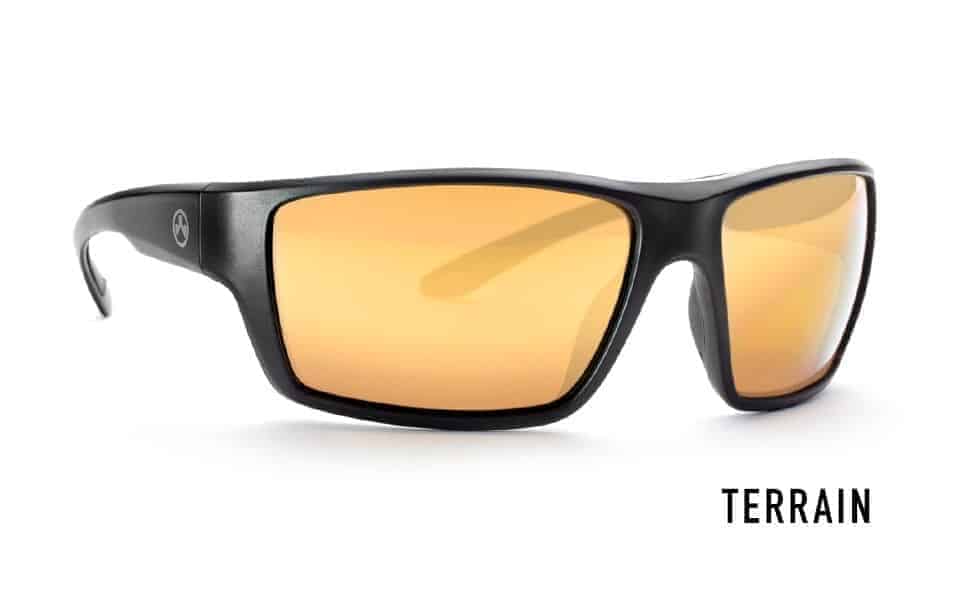
Image from Magpul.com
At the range, the Terrains slipped comfortably underneath my Howard Leight Impact Sport hearing protection, and allowed a full seal, letting the earmuffs perform their job admirably with a minimum of hassle. The lens frames have been somehow magically designed to let the wearer see without the encumbrance of framing in the field of view, yet not bump into the buttstock of a rifle when snuggling up into a proper cheek weld. Red dot and holographic sights performed wonderfully through the polarized lenses with zero silliness or added reticle flare – something I can’t say for other makes of eye pro I’ve worn – even clear with clear lenses.
Also read: Survival Gear Review: Magpul M-LOK Tripod Adaptor
While I didn’t shoot at the Magpul Terrain sunglasses to prove their ballistic worthiness – I did put them through the “Blowback Test”. Explanation: my Windham Weaponry 9mm carbine is a blowback rifle, meaning it uses direct gas to blow the bolt backwards – not a DI system of a standard AR. As a blowback design, the 9mm carbine expels an inordinate amount of hot gasses around the bolt, and directly back into the shooter’s eye around the charging handle. The experienced effect is similar to having someone aim a hair dryer on “High hot” directly at your eyeball while you’re attempting to control a firearm and provide good hits. It’s disconcerting to say the least. These gases occasionally do make it around eye protection if the design is poor. I’m terribly happy to report that the Magpul Terrain passed the Blowback Test with flying colors, and I received nary a puff of hot air or unburnt powder flakes in my peepers. The Magpul Terrain setup is an absolutely superb eye protection system for the range.
Admittedly, some of the readers won’t be using these Terrains at the range; it’s not their thing. These readers will be pleased to know that while the Magpul Terrains do feature a bit of an “Operator” look, they are not over-the-top designed to round out a full-blown tactical tuxedo and look pleasantly right at home on the nine-to-fivers piloting their daily drivers to work or home or the grocery store. Ultimately, the Magpul Terrains have absolutely updated my daily life with their light weight and stellar field of view. Driving with the Terrains on is far superior to other sunglasses designs, as there is no heavy framing or temple arm to obstruct peripheral vision.
 The only day-to-day weirdness I experienced with the Terrains was due to the polarized lenses – and it is a malady any sunglasses with polarized lenses will suffer. Using a cellphone with the Magpul Terrains on was a little wonky, since both smartphone screens and polarized sunglasses incorporate polarized glare-reducing coatings that block light waves travelling in certain directions and frequencies – vertical or horizontal (hence, “polarized”). While these coatings reduce glare and protect your eyes from both UVA and UVB waves, it also means that looking at a polarized surface through a polarized surface may have the resulting filtered light waves produced by an LCD screen not run in the same direction as the polarized filters on your face, resulting in diminished smartphone screen visibility. Though your mileage may vary, this can often be negated by simply looking at your cellphone horizontally instead of vertically – this changes the lightwave direction by aligning polarization filters with the directional light waves, and allows you to look at a smartphone screen through polarized lenses. You’re welcome.
The only day-to-day weirdness I experienced with the Terrains was due to the polarized lenses – and it is a malady any sunglasses with polarized lenses will suffer. Using a cellphone with the Magpul Terrains on was a little wonky, since both smartphone screens and polarized sunglasses incorporate polarized glare-reducing coatings that block light waves travelling in certain directions and frequencies – vertical or horizontal (hence, “polarized”). While these coatings reduce glare and protect your eyes from both UVA and UVB waves, it also means that looking at a polarized surface through a polarized surface may have the resulting filtered light waves produced by an LCD screen not run in the same direction as the polarized filters on your face, resulting in diminished smartphone screen visibility. Though your mileage may vary, this can often be negated by simply looking at your cellphone horizontally instead of vertically – this changes the lightwave direction by aligning polarization filters with the directional light waves, and allows you to look at a smartphone screen through polarized lenses. You’re welcome.
The other issue I found with the Terrains came from their light weight and larger lens size – on a grouse hunting trip in northern Maine this past week, I would often perch the glasses up on top of the bill of my baseball cap when pushing through heavy brush or dark woods. More than once, I found myself with the glasses missing – pulled off my head by a wayward branch or heavy brush. A backtrack would in in order to find the glasses – and it’s hard to hunt while looking for glasses. An integral retention system similar to my Wiley X P-17s would be hugely welcome – a way to utilize or quickly remove a strap/cord system would be a Godsend in heavy brush, while fishing, or roughhousing with the kids. Whaddaya think, Magpul? You guys are kind known for your ingenuity and all….
 Wrapping it Up
Wrapping it UpSunglasses ain’t just for keeping the sun out of your eyes anymore. Magpul has upped the shades game with the introduction of the Terrain, a platform that incorporates UV protection, glare reduction, chemical/dust/hot air defense, and ballistic protection into an extremely lightweight, immensely high-quality product that absolutely enhances your interface with the outside world. Available through Magpul’s website at $109 for the non-polarized variety, and a well-worth-it additional $40 for polarized lenses, you can pick and choose your favorite flavor combination of frames and lens colors/mirrors.
It seems Magpul has once again improved our lives by taking the mundane and accepted and completely revamping with a fresh outlook based on performance and experience. But really, did you expect anything less from a product with the Magpul logo on it?
The post Survival Gear Review: Magpul Terrain Sunglasses appeared first on Survival Cache.
Survival Gear Review: Magpul Terrain Sunglasses Read More »